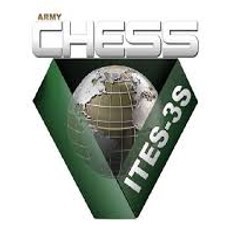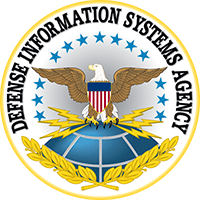Moving forward with a Business Process Management (BPM) initiative – from incremental Business Process improvement (BPI) to transformational Business Process Reengineering (BPR) – is a daunting prospect for most organizations. However, applying lean concepts up-front streamlines the initiative and results in early wins.
In my recent blog post “The 5 Essential Business Analysis Questions” I present five business questions that provide a framework for critical thinking and engaging stakeholders in a sophisticated business analysis conversation. The first and second questions are intuitive and are key to “getting lean” and produce tangible results quickly.
The first of the five question is “What are you currently doing?” The focus of this question is on defining the as-is state of the organization’s business processes (work activities, procedures, workflows, etc.). The output of this question is a set of detailed as-is process maps.
This question is essential to BPM. In order to identify opportunities for improvement and to move forward with change - hands-on staff, management and other stakeholders need to visually see the process, via process maps, to clearly and objectively understand the current as-is state of processes
The first question provides the basis for asking the second question.
The second of the five questions is “What are you currently doing that you [your organization] do not need to be doing?” There are numerous work activities (business policies, procedure steps/tasks, business rules, etc.) in most organizations that consume resource time and effort but do not produce value from a customer or organizational perspective.
These work activities are classified as Non Value-Added (NVA). Identifying and eliminating NVA work activities (aka waste) is the essence of “Lean.” Identifying opportunities to “Lean” processes of waste is often overlooked in improvement initiatives. However, it’s the essential step after creating the as-is process map.
Failure to lean processes before moving forward with more aggressive BPI and BPR tactics perpetuates legacy business rules (procedures, policies, workflow sequence, etc.). However, leaning the process of waste results in significant improvement in effectiveness and efficiency very early in the improvement initiative – and is discussed in more detail below.
Getting Lean Upfront
The thesis of this post is that it is essential to lean-out processes upfront before spending significant time and effort on aggressive process re-design and reengineering tactics and before investing in new information technology.
Intuitively, it does not make sense to spend time, talent and budget trying to improve something that does not need to be performed in the first place. However, I see it all the time – organizations expending resources trying to continually refine and improve things that do not add value and therefore do not need to be performed.
And it gets worse – organizations spend significant resources on identifying and specifying functional requirements and implementing solutions to automate work activities and procedures that the organization does not need to do in the first place – regardless of how well it can be performed via automation.
The key concept is to recognize that before applying various improvement techniques and / or applying information technology, first clean-up the existing process by getting it lean.
Getting Lean – Key Concepts
When I analyze a process map, in the first cut of my review I classify each activity in the process as Customer Value-Added, Organizational Value Added or Non Value-Added.
Customer Value-Added (CVA) work activities are work activities (including procedure steps and supporting business policies) that add-value to the output / product from a customer (internal or external) perspective. A CVA activity creates / changes / produces a characteristic of a product or service aligned with customer needs and expectations.
Or, to look at it another way, if the work activity (including procedure steps and supporting business policies) is not performed or applied, the value of the output / product of the process is diminished from a customer perspective.
Organizational Value-Added (OVA) work activities are work activities (including procedure steps and supporting business policies) that do not directly provide CVA, but the organization proactively chooses to perform these work activities for other reasons.
Rework of a defective part is an example of OVA. If an organization identifies a defect in a product and performs “rework” to bring the product up to required specifications rather than scrapping the product the organization, not the customer, absorbs the cost of the rework. In other words, the organization decided that the cost of rework is less than the cost of scrapping the item. The cost of reworking the product rather than scrapping the product is OVA.
Lean, in its purest form, classifies OVA as Non Value-Added (NVA). However, in practice, I find that OVA is an important distinction. Regulatory requirements, process methods, etc. change over time. The OVA classification enables tracking and facilitates on-going review of OVA activities over time to identify opportunities to reclassify OVA as NVA – and eliminate activities reclassified as NVA.
Non Value-Added (NVA) work activities are work activities (including procedure steps and supporting business policies) that do not provide CVA or OVA. The focus of this post is on the concept of Lean – eliminating and /or reducing NVA work.
NVA work activities are often legacy in nature (“We have been doing it this way since 1982”), or procedures resulting from in-the-moment overreaction to one-off exceptions (“We’ll ensure that this never happens again.”) or business policies put in place to comply with an internal or regulatory mandate - the mandate, however, is no longer applicable but the business policy and supporting procedures remain.
If the work activity is something that the organization does not need to do - if it doesn’t add real value – don’t waste time improving it – simply eliminate it! This is the very essence of the concept of “Getting Lean.” All of the cost of NVA work must be absorbed by the organization. NVA work cannot be priced into the product or service because NVA work does not add value from a customer’s perspective.
BPM and Lean – A Target Rich Environment
It’s surprising how much resource management and staff time is consumed by Non Value-Added (NVA) work. I have seen studies that estimate that less than 40% of total resource time in non-manufacturing sector organizations is actually expended on work that directly adds customer value. The other 60% is expended on Organizational Value-Add (OVA) and Non Value-Add (NVA) waste.
60% provides a target rich environment for applying lean thinking. There is significant opportunity for improvement wins early in a BPM initiative - and with limited investment in time, talent and budget.
NVA waste was originally classified by Toyota into seven categories. Over the years the Toyota classifications evolved outside of Toyota in the concept of lean manufacturing. Lean concepts continued to evolve and are applicable in the service sector and other non-manufacturing segments.
The seven core categories waste include internal transport (within the process) , inventory (sitting idle), motion (of people and mechanisms), waiting (for people and mechanisms), Overproduction (of product inventory), Over Processing (above customer requirements) and Defects (remediation and management). These categories apply to both manufacturing and services related processes.
Summary / Conclusion
Your organization’s business environment continues to change (customer requirements, competition, regulatory requirements, economic conditions, etc.) – and at an increasingly fast pace.
NVA work significantly impacts enterprise agility. Waste induces sluggishness in an organization’s business processes to adapt to changes in the business environment.
Lean processes, however, are agile and enable an organization and it’s supporting business processes to quickly respond and adapt to changes in the business environment.
The first business question is “What are you currently doing?” In order to identify waste, you first have to see it. This is a core value of the as-is process map. It enables stakeholders and subject matter experts to visually see waste in context.
Process maps provide the foundation for identifying waste. If you can identify waste via the process map, you have an excellent change of analyzing it and building a business case to eliminate it or minimize it.
The second business question is “What are you currently doing that you [the organization] do not need to be doing - and you would stop doing, if you could identify the waste and change the business policies, procedures, processes and/or supporting information technology that are the root cause of the waste.
If you ask these two question, then you have the opportunity to identify waste, build a business case for eliminating or reducing waste, facilitating a decision to change the root cause and ultimately implementing the process changes that eliminates and/or reduces waste – which clearly is the end goal!
And, as an added bonus, any waste that is eliminated or reduced automatically results in a leaner more agile process.
Download an in-Depth 8-Page Whitepaper
of “Lean: Getting Early Wins from BPM”
Subscribe to my blog | Visit our Knowledge Hub
Visit my YouTube channel | Connect with me on LinkedIn
Check out our Business Analysis Training Courses and Consulting Services




















